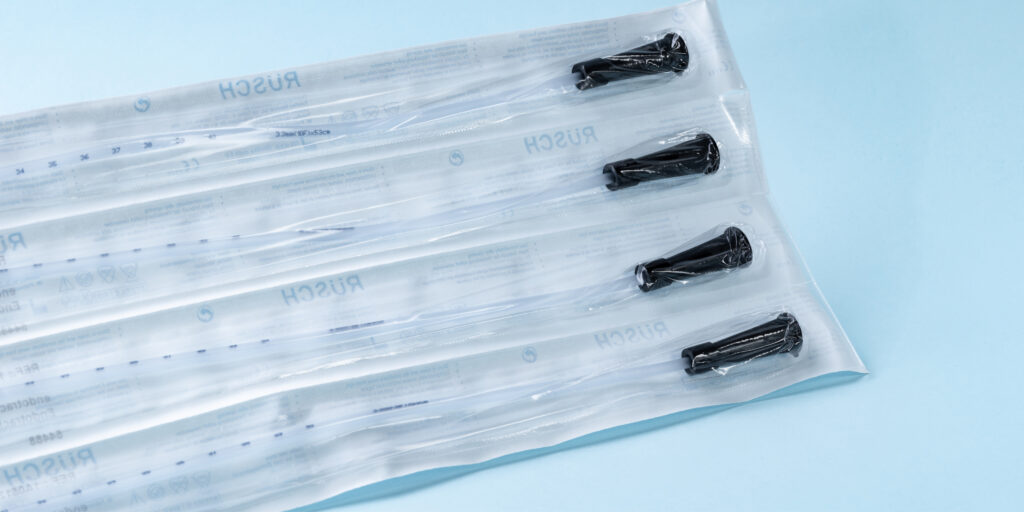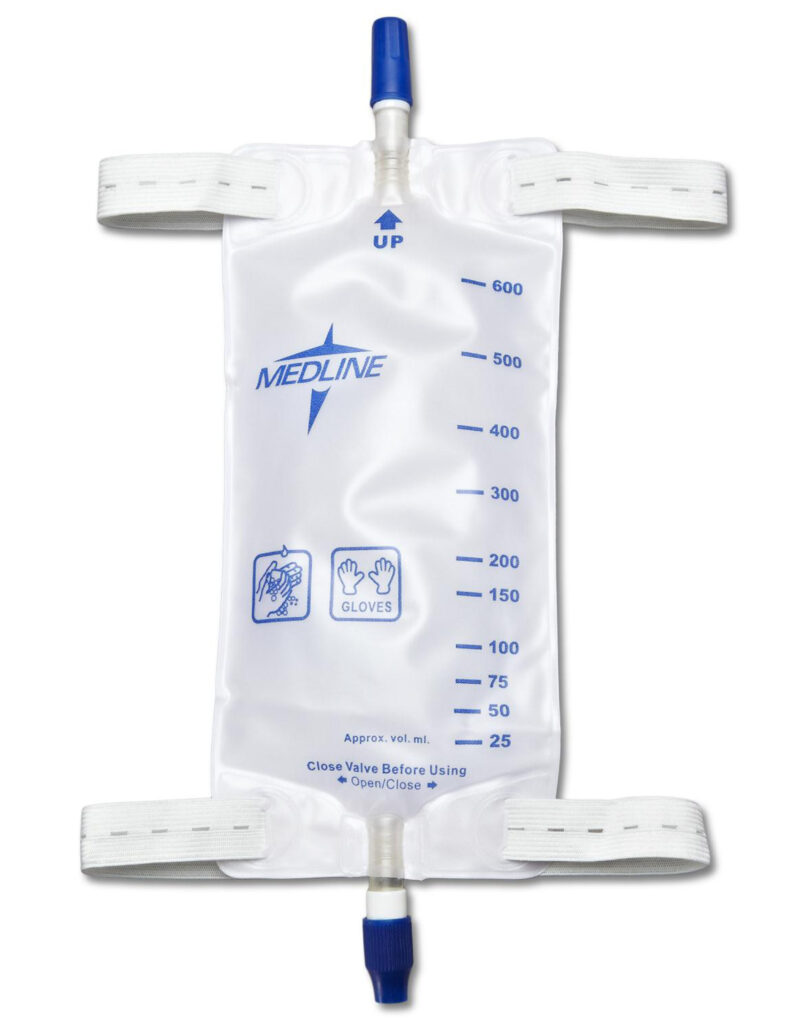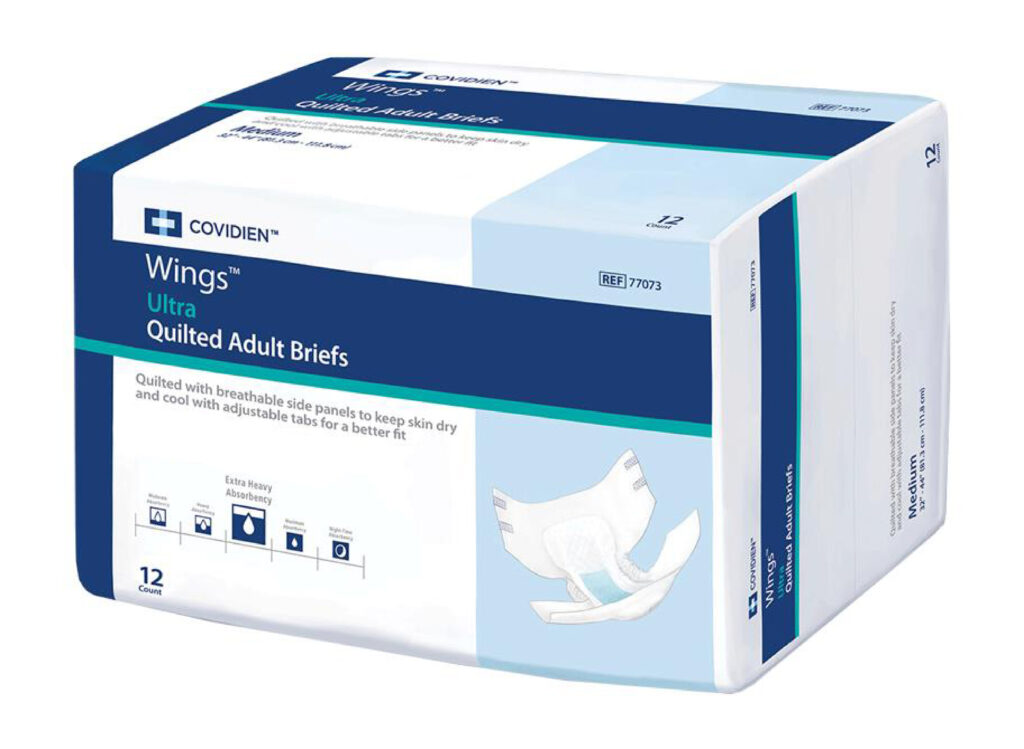Urinary Catheters
In this section, we’ll be reviewing urological incontinence supplies that are used in today’s marketplace. A urinary catheter is a hollow, partially flexible tube that collects urine from the bladder and leads to a drainage bag. For instance, Urinary catheters come in many sizes and types. They are made of:
• Rubber
• Plastic (PVC)
• Silicone
For example, catheters are necessary when someone can’t empty their bladder. As a result, if the bladder isn’t emptied, urine can build up and lead to pressure in the kidneys. Consequently, this pressure can lead to kidney failure. Ultimately, this can be dangerous and result in permanent damage to the kidneys.
Importantly, most catheters are necessary until you regain the ability to urinate on your own. Moreover, this is usually a short period of time. Obviously, elderly people and those with a permanent injury or severe illness may need to use urinary catheters for a much longer time or permanently. Let’s continue our journey to learn more about urological incontinence supplies.

Types of Urinary Catheters
Indwelling Catheters
An indwelling catheter is a catheter that resides in the bladder. It’s also known as a Foley catheter. This type can be useful for short and long periods of time.
A nurse usually inserts an indwelling catheter into the bladder through the urethra. Sometimes, a healthcare provider will insert the catheter into the bladder through a tiny hole in the abdomen. This type of indwelling catheter is known as a suprapubic catheter.
Additionally, a tiny balloon at the end of the catheter is inflated with water to prevent the tube from sliding out of the body. The balloon can then deflate when the catheter needs to be removed.
Indwelling Catheters
A condom catheter is a catheter placed outside the body. It’s typically necessary for men who don’t have urinary retention problems but have serious functional or mental disabilities, such as dementia. A device that looks like a condom covers the penis head. Then, a tube leads from the condom device to a drainage bag.
These catheters are generally more comfortable and carry a lower risk of infection than indwelling catheters. Condom catheters usually need to be changed daily, but some brands are designed for longer use. These can cause less skin irritation than condom catheters that require daily removal and reapplication. A wound, ostomy, and continence nurse (WOCN) can help make these recommendations. After all, they are experts in urological incontinence supplies.
Short-Term Catheters
A person may only need a catheter for a short period of time after surgery until the bladder empties. After the bladder empties, it’s necessary to remove the short-term catheter. Healthcare providers refer to this as an in-and-out catheter.
In a home setting, people are trained to apply the catheter themselves or with the help of a caregiver. It can be done through the urethra or through a hole created in the lower abdomen for catheterization.
Catheter Care
Always wash your hands before and after handling a catheter. Follow all of the instructions the doctor has given. Also:
- Make sure that urine is flowing out of the catheter into the urine collection bag. Make sure that the catheter tubing does not get twisted or kinked.
- Keep the urine collection bag below the level of the bladder.
- Ensure that the urine collection bag does not drag and pull on the catheter.
- It is okay to shower with a catheter and urine collection bag in place, unless the doctor says not to.
- Check for inflammation or signs of infection in the area around the catheter. Signs of infection include pus or irritated, swollen, red, or tender skin.
- Clean the area around the catheter twice a day with soap and water. Dry with a clean towel afterward.
- Don’t apply powder or lotion to the skin around the catheter.
- Do not tug or pull on the catheter.
- Talk with your doctor about your options for sexual intercourse while wearing a catheter.
- At night it may be helpful to hang the urine collection bag on the side of the bed.
Drainage Bags
A catheter that is left in place for more than a short period of time is generally attached to a drainage bag to collect the urine. Importantly, this also allows for the measurement of urine volume.
Types of Drainage Bags
There are three types of drainage bags: leg bag, down drain, belly bag
First, is a leg bag, a smaller drainage device that attaches by elastic bands to the leg. A leg bag is usually worn during the day, as it fits discreetly under pants or skirts, and is easily emptied into a toilet.
The second type of drainage bag is a larger device called a down drain that may be used overnight. This device is hung on a hook under the patient’s bed—never placed on the floor, due to the risk of bacterial infection.
Thirdly, there is a bag called a belly bag and is secured around the waist. This bag can be worn at all times. It can be worn under the patient’s underwear to provide a totally undetectable look.

Drain Bag Care
To empty the urine collection bag:
- You will need to empty the bag regularly. It is best to empty the bag when it’s about half full or at bedtime. If the doctor has asked you to measure the amount of urine, do that before you empty the urine into the toilet.
- Wash your hands with soap and water. If you are emptying another person’s collection bag, you may choose to wear disposable gloves.
- Remove the drain spout from its sleeve at the bottom of the collection bag. Open the valve on the spout.
- Let the urine flow out of the bag and into the toilet or a container. Do not let the tubing or drain spout touch anything.
- After you empty the bag, close the valve and put the drain spout back into its sleeve at the bottom of the collection bag.
- Wash your hands with soap and water.
Adult Diapers

Adult diapers come in two styles:
Pull-up version. This style is a good choice if you’re looking for a less bulky absorbent undergarment and want a fit more like underwear.
Diapers with tabs. Diapers with tabs are easier for people who have difficulty standing to put them on or for those cared for by a caregiver. They’re also more fitted at the leg, which helps with leaks.
Types of Incontinence Products
Pads: inserted into the underwear and held in place with an adhesive strip
Liners: Liners are for those who suffer from mild or light incontinence. Just like pads, they are also held in place by underwear and are available in diverse levels of absorbency.
Protective Underwear: protective underwear are one-piece undergarments that can be easily pulled on as well as taken off, also referred to as pull-ups. They come in varying levels of absorbency and give protection from mild to severe incontinence.
Underpads: These are utilized to protect beds, chairs, or other furniture from incontinence, while the patient is being taken care of, or the diaper is being changed.
Penile Clamps: A small amount of pressure exerted on the penis can temporarily close off the urethra, stopping any potential leakage. The part that fits around the penis is soft foam and shouldn’t be uncomfortable. Using them too often could cause circulation problems, skin irritation, and strictures. Generally, they’re only meant to be used for a couple of hours at a time.




